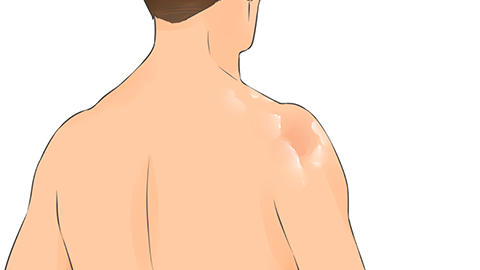What are the causes of skin peeling in summer?
Summer skin peeling may be caused by dry skin, ultraviolet (UV) radiation damage, seborrheic dermatitis, dyshidrotic eczema, or tinea corporis. Management should be based on the specific condition. If physical discomfort occurs, it is recommended to visit a hospital promptly and follow medical advice for appropriate treatment.

1. Dry Skin: In summer, high temperatures accelerate evaporation of skin moisture. If moisture is not replenished timely, the skin barrier function may be compromised, leading to peeling. Symptoms include rough, tight skin with fine scaling. It is important to drink plenty of water, aiming for 1500–2000 mL daily. Use gentle moisturizing skincare products, such as creams or lotions containing glycerin or hyaluronic acid.
2. UV Radiation Damage: Strong summer UV radiation can damage skin cells in the stratum corneum after prolonged sun exposure, leading to gradual peeling. The skin may become red, painful, and subsequently peel. Sun protection measures are essential, such as applying sunscreen, wearing a wide-brimmed hat, and using an umbrella. For sunburn-related peeling, cold compresses may help relieve symptoms, followed by application of post-sunburn repair products, such as aloe vera gel.
3. Seborrheic Dermatitis: In summer, increased sebaceous gland activity can lead to excessive oil accumulation on the skin surface, causing inflammation and peeling, often accompanied by itching and red patches. Patients may use topical medications such as tacrolimus ointment, pimecrolimus cream, or compound ketoconazole shampoo under a doctor's guidance to alleviate symptoms.
4. Dyshidrotic Eczema: Excessive sweating in summer combined with blocked sweat excretion can lead to fluid retention under the skin, forming blisters. After the blisters dry up, peeling may occur. This commonly affects the palms and soles, accompanied by itching and a pricking sensation. Medical treatment under a doctor's guidance may include calamine lotion, triamcinolone acetonide-urea ointment, or loratadine tablets.
5. Tinea Corporis: The hot and humid summer environment promotes fungal growth. Skin infections such as tinea corporis may result in peeling, red patches, papules, with clear borders and itching. Patients may use clotrimazole cream, terbinafine hydrochloride cream, or itraconazole capsules under medical supervision.
In daily life, it is advisable to apply sunscreen with a high SPF, wear protective gear such as wide-brimmed hats and sunglasses, and avoid prolonged outdoor exposure during peak sunlight hours.
References:
[1] Lei Mingli, Huang Xi, Yan Wenjie. Study on the efficacy and safety of supramolecular salicylic acid combined with active zinc in improving seborrheic dermatitis of the scalp [J]. Journal of Clinical Dermatology, 2025, 54(03):141–145.
[2] Yu Li. Observation of therapeutic effect of self-prepared spleen-strengthening and dampness-resolving decoction on spleen deficiency with excessive dampness type dyshidrotic eczema [J]. Primary Journal of Traditional Chinese Medicine, 2022, 1(08):9–14.






